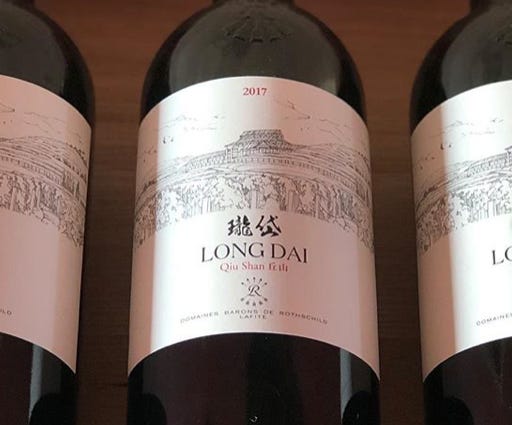Dear all
I had some interesting feedback from my “Lessons from China on national pride” post on Tuesday (well, Wednesday, by the time I put it out). My call for the UK to look at the success that China has had in binding its population together by establishing a national vision and purpose (the 2049 dream of national rejuvenation) was well received by many.
But not by all. Chinese nationalists incongruously claimed that only a country that had been humiliated for a century and a half by Western nations could be allowed to have a national vision. Westerners of a distinctly leftist persuasion said that the nation state was defunct and so it was useless to give it legs, or claimed that the only thing Britain wanted to do was recreate the Empire. I obviously disagree with all of these statements, but I’m always happy to hear what people think.
I’m taking a break from Chinese history this week at the request of my wife, who, fresh from a night out, has suggested I write this week’s newsletter on Chinese wine. It is a subject I have, on the whole, enjoyed researching for a number of years.
In the meantime, please remember to share, like, comment, and subscribe!
***
Wine and China are very much in the news right now. You might have seen that in November, China slapped tariffs on Australian wine of up to 212%, officially labelled as temporary anti-dumping measures to stop subsidised imports. Unofficially it was widely recognised as being retaliation for Canberra’s broadsides against Beijing on Covid and other matters. China’s loss is the UK’s gain: Australian wine exports to the UK have surged almost 30% in the last year.
Despite its current popularity, China is not traditionally a mass consumer of grape-based wine. Instead, the drinks of choice have been rice wines or baiju, a fierce, sorghum-based spirit that ranges from 35% to 60% proof.
That does not mean there isn’t a long history of grape-wine in China. The first evidence of grape fermentation appeared in about 7000 BC in Henan province, a beverage that also included hawthorn, rice, and honey. Yet it wasn’t until the Han Dynasty (206 BC – 220 AC) that “proper” wine reached China, probably along Hellenistic trade routes laid by Alexander the Great. Grapes started to be cultivated in the Middle Kingdom, but they were considered exotic and wine was reserved mainly for the emperor's table. A millennium later, Marco Polo noted that it was still rice wine that was more popular.
It was only in the mid 1990s that wine has become widespread in the country. Red wine especially has now become a status symbol, exchanged as gifts, or as a way to impress. About a decade ago I sort of remember a night in a wine bar in Wuhan, watching the locals pay astronomical prices for what seemed like relatively standard imports of French wine.
Although it is Australian wine that dominates the market (comprising 36% of sales in China in 2019), French wines dominate the quality segment. France has long had a reputation for sophistication in China, deservedly or not, and it is probably for this reason that Chinese elites are no longer satisfied with showing off with bottles of red. Over the last few years the trend has been for the richest of them to buy French vineyards: an estimated 160 chateaux are now under Chinese ownership, up from 30 in 2012.
This has not gone down well with the French government, and President Macron has been speaking out against the largescale purchase of what he deems to be a national asset. “Agricultural land in France,” he said with one finger pointed firmly at China, “is a strategic investment on which our sovereignty depends.”

Worries about Chinese ownership of French vineyards might, however, soon turn into concerns about Chinese wine production.
For years China was synonymous in wine circles for two things. First, the size of the market. Second, the amount of counterfeits on offer. There’s a longstanding meme doing the rounds which claims that more bottles of Châteauneuf-du-Pape are sold in China each year than have ever actually been made.
Whilst it is hard to prove that particular story, a more credible report by the Interprofessional Council of Bordeaux Wine estimates that some 30,000 bottles of fake imported wine are sold per hour in China. It is thought that perhaps 50% of wines retailing for $35 or more are bogus, and an Australian wine critic was quoted as saying that he had heard stories that the average bottle of Champagne in China is refilled seven times.
Today the headlines are more about the quality of home-grown Chinese wines. They have even done well in international wine competitions: at the Decanter awards in 2019, bottles from China won seven gold medals in red, white and rosé. Chinese brands look poised to enter the periphery of the Western mass market too, having being reported on the shelves of the British supermarket Tesco.
Even Rothschild is getting in on the act. They have recently produced the first bottles of locally produced Chinese wine from an estate in the north east of China. Long Dai, as the wine is known, is blend of Cabernet Sauvignon, Marselan and Cabernet Franc, and has been compared to a Napa Valley Cabernet.

As with many countries, alcohol plays a central role in Chinese society. Wine’s colonisation of the middle-class palate has led to huge fortunes being created in the vineyards and wineries of the West, but the golden age might be coming to an end. As has happened in other sectors, China is buying up foreign competitors and absorbing the know-how to launch its own industrial sector.
Whilst the connoisseurs might dismiss the Chinese terroir, the sommeliers may not have a choice. Wine from the People’s Republic looks to be on the same upwards path as countless other economic sectors – and will lead to a headache in more ways than one for foreign competitors.


